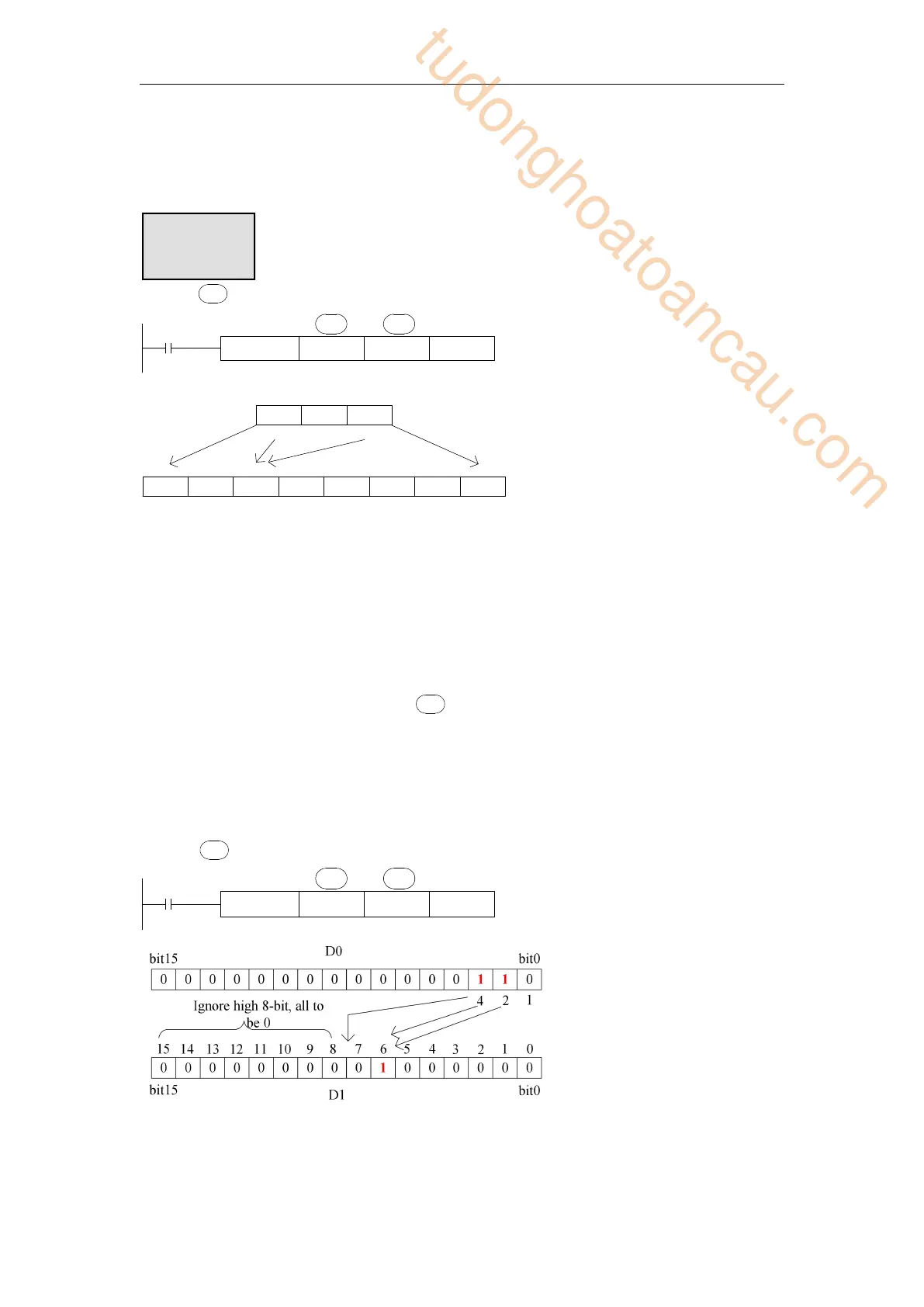159
*Notes: D includes D, HD; TD includes TD, HTD; CD includes CD, HCD, HSCD, HSD; DM
includes DM, DHM; DS includes DS, DHS. M includes M, HM, SM; S includes S, HS; T
includes T, HT; C includes C, HC.
< When is bit unit > n≤16
1 0 1
0 1 0 0 0 0 0
X2 X1 X0
M17 M16 M15 M14 M13
M12
M11 M10
7 6 5 4
2
1 0
4
0
2
1
3
n= 3, so the decoding object is the lower three bits in DX0, which are X2 ~ X0.
n = 3, so the decoding results need to be expressed by 2
3
= 8 bits, which are M17 ~ M10.
When X2 = 1, X1 = 0, X0 = 1, the value it represents is 4 + 1 = 5, so M15 in the fifth place
from M10 changes to 1; when X2 ~ X0 is all zero, the value is 0, so M10 is 1 (M10 is the 0th
place).
If n = 0, the instruction will not be executed. If n is the value out of 0 ~ 16, the instruction
will not be executed.
When n = 16, if the decoding commandis a bit soft component, the number of points is 2 ^ 16
= 65536.
When the driver input is OFF, the instruction is not executed, and the decoding output of the
action is maintained.
< When is word device > n≤4
The low n-bit (n ≤ 4) of the source address is decoded to the target address. When n ≤ 3, the
high 8-bit of the target turns to 0.
If n = 0, the instruction will not be executed. If n is out of 0 ~ 4, the instruction will not be
tudonghoatoancau.com

